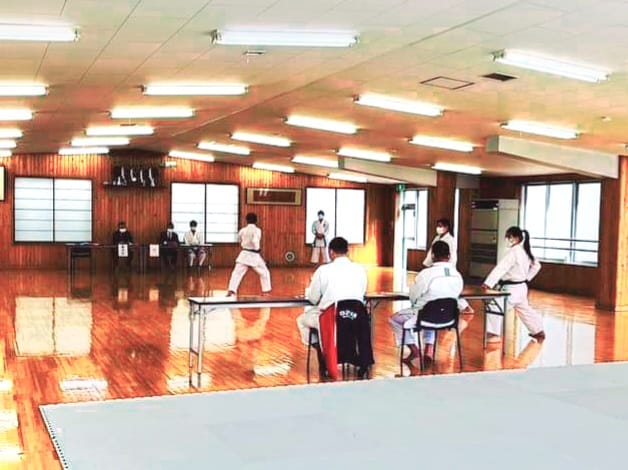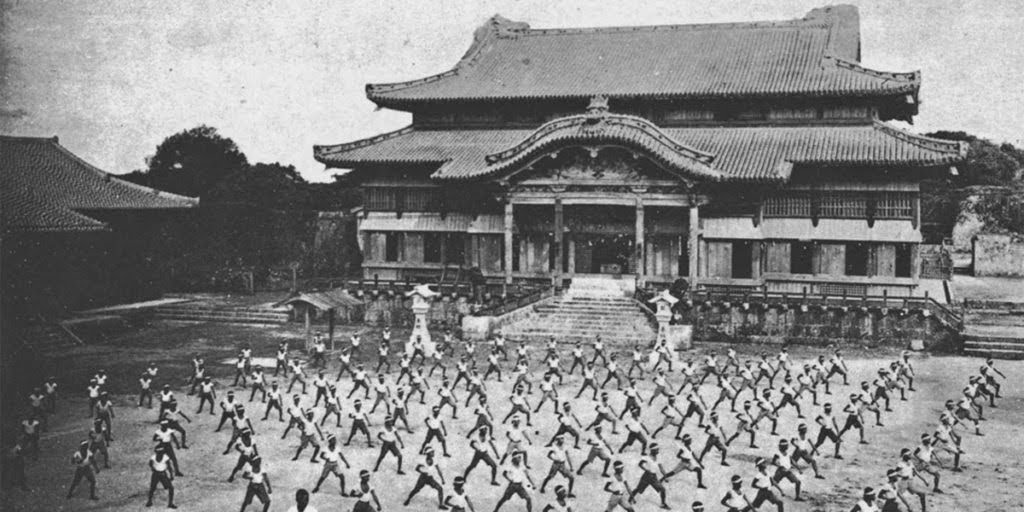
Photo courtesy of https://ageshiojapan.com/okinawa_karate/okinawan-karate-pioneers
Originating in the Ryukyu Kingdom (Okinawa), Karate evolved from the Martial art ‘Te’ (hand) around 500 yrs ago, possibly also influenced by ancient styles of Chinese Kempō due to frequent contact and exchange with China at the time. It was a privilege studied only by the upper classes of the Ryukyu Kingdom.
Over centuries, when the Ryukyu kingdom was taken over by the Satsuma Clan from Japan, the martial art practiced came to be known as Karate, and the area itself became recognized as Okinawa. It was during this time that Karate was driven into secrecy through private training and later also developed as a means of self-defense for Okinawans, who were prohibited from carrying weapons by Japanese rulers. This is in fact what Karate stands for Kara – Empty, Te – Hand.
During World War II, Karate faced challenges as Okinawa became a battleground, but practitioners continued to train in secret to preserve the art. After the war, Karate was integrated into Japanese military training, contributing to its spread throughout Japan and later the world.
Karate is one of the Japanese traditional martial arts referred to as Budō (武道), embodying a way of life that integrates physical, spiritual, and ethical aspects, emphasizing self-development, fulfillment, and personal growth.
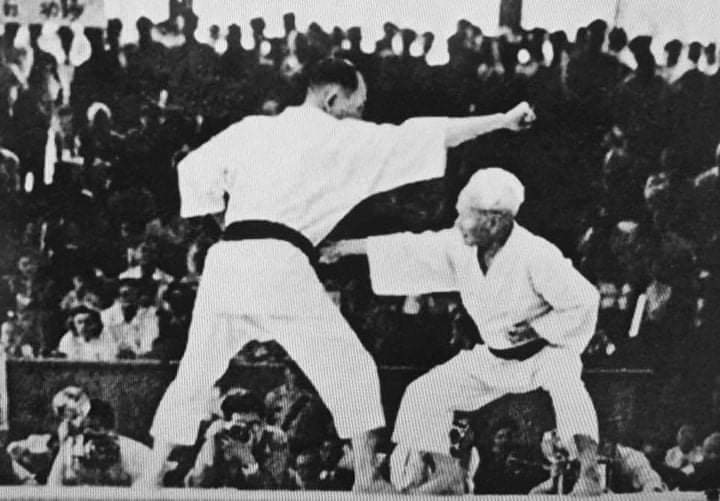
GICHIN FUNAKOSHI
Gichin Funakoshi, often referred to as the father of modern Karate, played a pivotal role in popularizing and standardizing Karate in Japan. He moved from Okinawa to Tokyo in 1922 and introduced Karate to the Japanese mainland in the early 20th century. Funakoshi's teachings emphasized not only physical techniques but also the importance of character development and moral values. His efforts led to the establishment of the Shotokan dojo in Tokyo and the publication of his book "Karate-Do: My Way of Life," which remains a classic text in the martial arts world.
A picture of Funakoshi Sensei is usually present in Dojos as a sign of gratitude, respect and remembrance.
THE ORIGIN OF “SHOTOKAN”
“Shotokan” is a term derived from Gichin Funakoshi’s pen name, “Shōtō,” 松涛 and the word “kan,” which means “house” or “hall” in Japanese. So, “Shotokan” essentially translates to “Shoto’s house” or “Shoto’s hall.” Gichin Funakoshi used the pen name 松涛, Shōtō when signing his poetry, meaning “pine-waves” (the sound of the wind blowing through the pine leaves), and when he established his first dojo (training hall) in Tokyo, his students named it “Shotokan” in honor of his pen name.
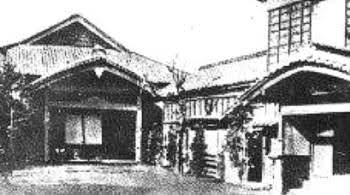
Photo courtesy of https://www.wskf.com.au/wp-content/uploads/2016/11/first-shotokan-dojo-japan.jpg
The Shotokan style of Karate is characterized by its powerful, linear techniques, speed, long stable deep stances and dynamic movements. Core principles include Kihon (basic techniques), Kata (forms), and Kumite (sparring), all practiced with the aim of physical fitness, mental discipline, and practical self-defense skills.
BRIEF HISTORY AND TIMELINES OF JKA
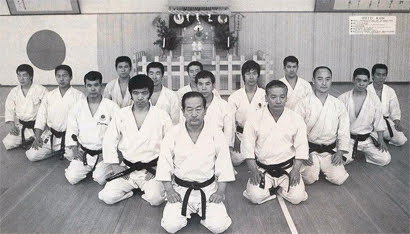
Photo courtesy of https://chilternkarate.co.uk/wp-content/uploads/2017/08/nakayama_group.jpg
Masatoshi Nakayama Sensei becomes the Chief Instructor of JKA, succeeding Funakoshi Sensei. Under Nakayama Sensei’s leadership, JKA experienced significant growth and development.
Masatoshi Nakayama Sensei becomes the Chief Instructor of JKA, succeeding Funakoshi Sensei. Under Nakayama Sensei’s leadership, JKA experienced significant growth and development.
JKA headquarters dojo was established in Tokyo, Japan, becoming the central hub for Shotokan karate training and education.
JKA established its International Division to oversee its global expansion and the establishment of affiliated dojos and organizations worldwide. Several instructors were sent around the world to teach which lead to the popularisation and spread of Karate.
JKA hosts the first JKA World Karate Championship in Tokyo, Japan, showcasing the skill and talent of karate practitioners from around the world.
Nakayama Sensei publishes the seminal work “Dynamic Karate,” which became a definitive guide to Shotokan karate techniques, principles, and training methods.
JKA underwent internal restructuring, leading to the establishment of regional JKA organizations in various countries to oversee local operations and activities.
JKA celebrated its 45th anniversary with a series of events and demonstrations held in Japan and around the world, highlighting its achievements and contributions to the global karate community.
JKA continues to expand its global presence through the establishment of affiliated organizations and the promotion of traditional Shotokan karate training and education.
JKA continues to thrive as one of the most influential and respected karate organizations worldwide, with thousands of members and affiliated dojos spanning across numerous countries. JKA continues to oversee and organize various international karate competitions and events, including JKA World Karate Championships, JKA International Friendship Tournaments, JKA Regional Championships, JKA National Championships, JKA Dan Examinations, JKA Training Camps and Seminars
RECOGNITION BY THE JAPANESE GOVERNMENT
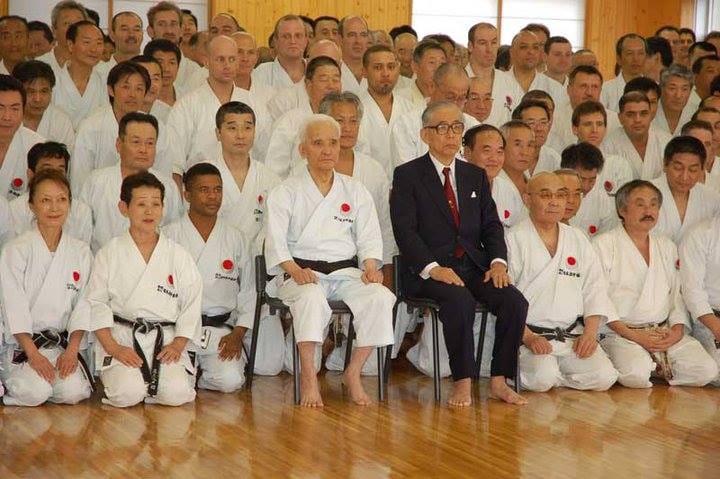
Gichin Funakoshi Sensei’s efforts to promote karate as a form of physical education and character development led to its incorporation into the Japanese education system. He advocated for karate to be taught in schools and universities as a means of promoting discipline, physical fitness, and mental well-being among students.
The Japan Karate Association (JKA) holds a unique position in Japan and globally, defining itself as the ‘Keeper of Karate’s Highest Tradition’ for its historical significance and contributions to the development and promotion of traditional Shotokan karate.
However, it is also recognized and esteemed by the Japanese government, being given title of Shadan Hojin – Incorporated Association by the Japanese Ministry of Education in 1957 and Koeki Shadan Hojin as a Public Interest incorporated Association by the Japanese Government in 2012 due to its continuous commitment and contribution to society.
INTERNATIONAL RECOGNITION OF DAN GRADINGS
Led by senior instructors who trained directly under Funakoshi, the JKA developed a unique curriculum emphasizing traditional techniques, Kata, and Kumite. It standardized grading and instructor certification, ensuring quality control and consistency in Karate instruction.
JKA’s dan grading system, which confers black belt ranks to practitioners based on their skill and proficiency, is officially recognized by the relevant Japanese martial arts governing bodies. This recognition lends credibility to JKA’s grading system and underscores its authority in evaluating Karate practitioners’ skill levels.
